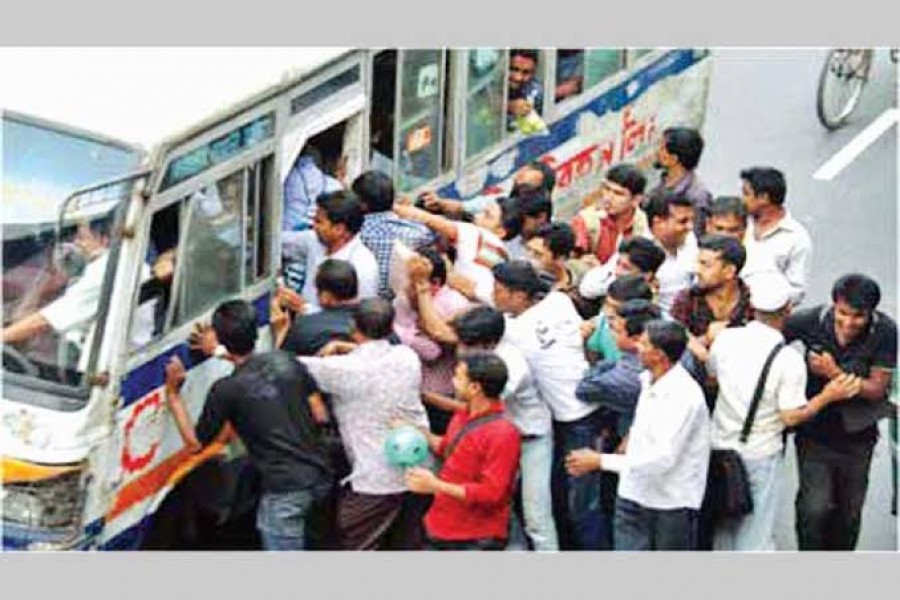Notwithstanding the status of the capital city of the fastest growing economy, Dhaka presents a fleet of buses that is looked down upon as one the worst in the world. Most of the public buses are in a ramshackle condition with dents all over and broken front, rear and sides. Both exterior and interior looks are pitiable. Drivers and helpers of these buses are generally rude in their behaviour and insensitive to commuters. Sitting condition inside the buses is dirty and uncomfortable in general. Access to the buses is challenging especially for women, children and elderly people.
Except a few air-conditioned (AC) buses and Bangladesh Road Transport Corporation (BRTC) operated non-AC buses, all the other buses and minibuses are awful to commute. Commuters having no alternative are compelled to take the awful journey. Most of them have to put up with daily doses of unpleasant and disturbing situations. There is virtually no effective measure to remedy the terrible conditions of public buses though the government has assured in many occasions that situation would improve soon. Some measures have also been taken in this regard. These are, however, inadequate.
The number one problem concerns the outlook of the policymakers. For them, a comfortable and decent bus is an AC-bus as if a non-AC bus can't be comfortable. They ignore the fact that a large number of commuters in Dhaka are not able to pay higher fare of luxurious AC-bus. For them, non-AC but comfortable bus is essential. As a matter of fact, both AC and non-AC buses should be operated and commuters will be at liberty to choose between those.
Again, some of the AC-buses are high-floor which is a barrier to women and elderly people as they have to ascend steep steps. Usually this kind of bus is suitable for long-route travel, not for intra-city commuting as commuters have to get off and get on board quickly within a short span of time. Single-door facility of buses makes the thing more upsetting.
Low-floor non-AC buses with wide-door facility are best fit for Dhaka. Friendly to women, children and senior citizens, this type of bus can bring a reasonable comfort for the regular commuters. Only the BRTC has a few such buses in its fleet.
One needs to look into neighbouring country's capital Delhi to find out a suitable model for Dhaka to deal with public bus problem. Last month, Delhi Transport Corporation introduced 104 standard floor buses fitted with hydraulic lifts. In August it flagged off 25 non-AC standard floor buses. It will introduce 800 more such buses and 300 low-floor AC electric buses by 2020. The DTC is gradually replacing existing high-floor buses.
This kind of initiative is not impossible in Dhaka. What is required is thoughtful planning and strong political will. All the ramshackle buses could be gradually replaced by AC and non-AC low-floor wide-door buses. The much talked-about franchising and colour-coded bus is still a distant dream. Instead, the government may initiate private-public partnership with the BRTC as a focal point to replace the existing outdated buses.


